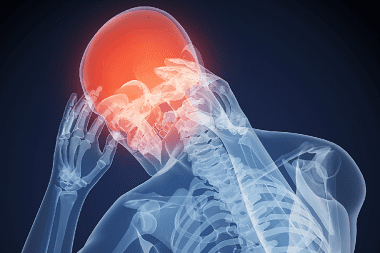Infectious diseases >>>> Purulent meningitis
Purulent meningitis.

The inflammatory process of the membranes of the brain or spinal cord, provoked by a bacterial infection, is called "bacterial meningitis" or purulent meningitis, in contrast to serous meningitis caused by a viral infection. The disease occurs in various age categories. Among the various factors that create favorable conditions for the development of the disease, the most tangible role is played by:
- Decreased immune system responses
- Craniocerebral trauma,
- Surgical interventions.
Bacterial meningitis can develop as an independent disease when its onset is preceded by a bacterial infection of the pharynx or nasal cavity, which hematogenously moves to the meninges, or arises as a secondary disease, which was preceded by the presence of a focus of infection in the body, from which the infection by the hematogenous or lymphogenous route has moved to the membranes brain (for example, with purulent diseases of ENT organs, in the presence of abscesses).
Bacterial meningitis is characterized by varying degrees of severity of the course (mild, moderate and severe) and features of the development of the disease (acute, fulminant, abortive, recurrent).
Signs of purulent meningitis:
Acute purulent meningitis begins with chills, a sharp rise in temperature to 39-40 °, with increasing intense headache, vomiting, the appearance of a petechial rash on the skin, can proceed with convulsions, psychomotor agitation. A characteristic sign of meningitis is considered to be a set of shell symptoms - meningeal syndrome.
Abortive purulent meningitis develops sharply, but, before reaching the full development of the disease, it abruptly breaks off and ends with recovery.
Recurrent purulent meningitis (currently rare) is characterized by a relapse of the disease against the background of an apparent recovery after 5-7 days.
Fulminant purulent meningitis develops extremely quickly (from several hours to two to three days) with an increase in temperature up to 40-41 °, with a petechial rash. The lethal outcome occurs as a result of acute intoxication due to the rapid disintegration of meningococci. Cerebral edema and degenerative changes in brain tissue develop, but purulent processes are not detected.
In addition to the symptoms described above, with purulent meningitis , dysfunction of the cranial nerves is possible, which can lead to double vision, visual disturbances, drooping of the upper eyelids, and sometimes facial neuralgia. If the inflammatory process affects not only the lining of the brain, but also the medulla itself, meningoencephalitis develops with paralysis, impaired sensitivity, reflex disorders, and increased muscle tone.
Treatment for purulent meningitis requires a hospital stay. The patient undergoes lumbar puncture and bacterial examination of the cerebrospinal fluid. Depending on the identified pathogen, antibiotic therapy is prescribed (Ampicillin, cephalosporins, aminoglycosides). To prevent cerebral edema, dehydration is carried out (Mannitol, Furosemide), inflammatory reactions are quenched with glucocorticosteroids (Prednisolone, Dexamethasone). To prevent infectious and toxic shock, infusion therapy is performed. In addition to etiotropic treatment, vitamin therapy is carried out, according to the symptoms, nootropic drugs, tranquilizers, anticonvulsants are prescribed.

Read

Read



























